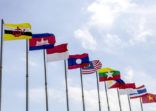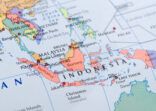This week, we take a look at two funds from JP Morgan Asset Management and Fidelity Funds that seek to explore investment avenues in ASEAN (Association of South East Asia Nations) region.
The JP Morgan ASEAN Equity Fund seeks to invest at least 67% of its assets in companies domiciled in or carrying out main economic activities in the ASEAN region.
On similar lines, the Fidelity ASEAN Fund aims to deploy at least 70% of its assets in the shares of companies quoted on the stock exchanges of Singapore, Malaysia, Thailand, the Philippines and Indonesia.
Both funds are also permitted to invest outside the principal geographies and market sectors as well.
While the two funds are quite similar, the key difference is the Fidelity fund follows a more benchmark-oriented strategy compared with the JP Morgan fund, said Wing Chan, director of fund research in Asia at Morningstar.
Investment strategy review
Both the funds use the Growth at Reasonable Price (GARP) strategy and look at the earnings growth of companies.
“There are minor differences,” Chan said. “What differentiates the two is that the Fidelity fund is more closer to the benchmark. If you compare the two funds, the Fidelity fund tends to have a little bit more of a quality bias than the JP Morgan fund.”
The net margin ratio (27.3%) and return on assets (7.6%) of the Fidelity fund is higher than the JP Morgan fund’s net margin ratio (25.9%) and return on assets (6.9%). This compares with the category’s net margin of 24.7% and return on assets of 7.1%.
Further, there are differences in the regional allocation. Fidelity has a greater allocation to Singapore and the JP Morgan fund has a higher allocation to Thailand.
As per the September-end factsheet, the Fidelity fund has allocated 32.5% of the assets in Singapore-domiciled companies, which is in line with the fund’s benchmark MSCI South East Asia Index. In comparison, the JP Morgan fund has a 27.2% weighting in Singapore-based companies.
In regards to Thailand companies, Fidelity has 15.2% weighting while JP Morgan’s fund portfolio has a 21.5% weighting. This compares with 15.7% representation of the country in the benchmark index.
“Even as the Fidelity fund is benchmark aware, it does have a greater allocation to small- and mid caps,” Chan added.
The allocation to small- and mid-cap companies was at 9.3% and 5.7%, respectively.
The JP Morgan fund has 5.9% and 1.8% of the assets deployed in mid- and small-cap companies.
Performance Review

“There haven’t been massive differences in performance and both funds share a similar investment style,” Chan said.
In 2013, the JP Morgan fund did slightly better, being among the top quartile funds in 2013, whereas the Fidelity fund was in the second quartile.
“Both funds follow a bottom-up investment approach and focus on fundamentals and identifying growth companies at a reasonable price. The fundamental strategy tends to run well.”
However, when the market is influenced by a geopolitical crisis, for example, or for some reason experiences massive capital outflows, both funds tend to be negatively impacted, he added.
In 2013, the return on the JP Morgan vehicle declined by 1.98% compared to the 4.83% fall of the Fidelity fund.
“But, in 2014 there is a flip. Fidelity is in second quartile again. So far until September, the JP Morgan fund has fallen to the last quartile. JP Morgan is more volatile relative to its peers due to its active positions.”
Year-to-date, the Fidelity fund with a 9.54% return outperformed the JP Morgan fund with 7.8% return.
Since the Fidelity instrument is more benchmark oriented, it will perform in line with the market, Chan said.
“For JP Morgan, it depends upon its positions as they do not have a particular bias to defensive, yield or quality stocks.”
Both funds are relatively underweight positions in Malaysia due to expensive valuations.
“There are obviously times when Malaysia does better than other markets. I would guess that when the Malaysia market does very well, these funds tend to take a hit.”
Manager Track Record
Gillian Kwek has been managing the Fidelity fund since April 2008. She joined Fidelity in 2001 as a research analyst covering the regional transportation and metals and mining industries.

Pauline Ng has been the lead manager of the JP Morgan fund since September 2010. She joined the firm in 2005 as an investment manager, specialising in countries such as Malaysia and Singapore. Sarinee Sernsukskul and Chang Qi Ong are the deputy managers for the fund.

Chan pointed out that Kwek has been managing the Fidelity fund for six years. Ng’s portfolio management tenure is slightly shorter as she started working on the fund in the second half of 2007 with the lead manager.
Morningstar rates the Fidelity fund manager a little higher than the JP Morgan manager due to the relative strength of the team.
“The Fidelity fund has access to a greater team of about 50 analysts in the region.
Fees

Morningstar has a positive score on the JP Morgan vehicle in terms of pricing.
Chan said the Fidelity fund with a total expense ratio of 1.96% for the year to April 2014 is more expensive than the JP Morgan fund.
He noted that the total expense ratio for JP Morgan’s Luxembourg vehicle is 1.9% for the year to December 2013.
However, JP Morgan’s ASEAN fund has another share class with a Hong Kong domicile, which has a TER of 1.61% for the year to September 2013.
This compares with the category median of 1.95%.
Conclusion

Both the funds are rated as neutral by Morningstar and have a four-star rating.
“If investors place a greater focus on the team, I think the Fidelity fund will work better for them. But, if you can access the Hong Kong-domiciled fund of JP Morgan, it is 30 basis points cheaper. These are the key considerations,” Chan said.
















